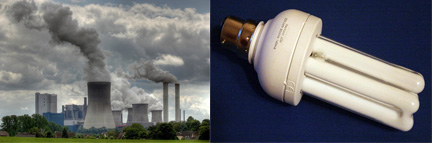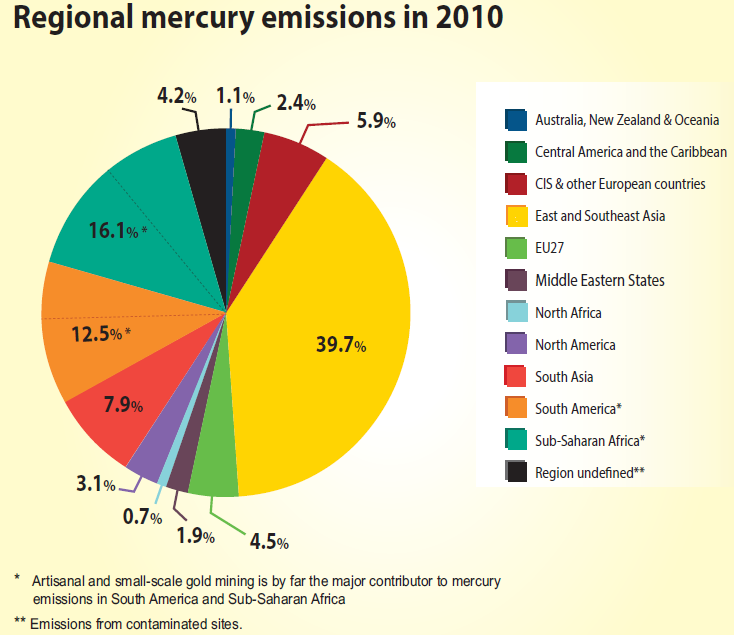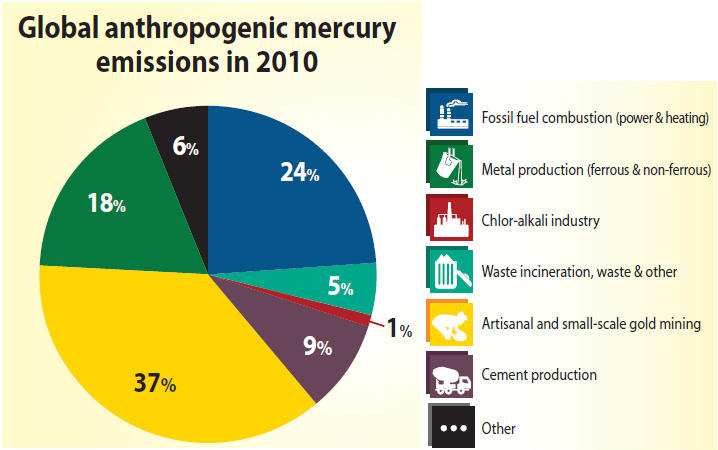by Leah Stokes and Amanda Giang
Many countries have existing regulations on mercury, whether on emissions from coal plants or on the use of mercury in products and processes. Here is a short summary of key mercury regulations in some of the world’s largest emitters: the US, the European Union (EU), China, India, and Canada.
United States (US)
Emissions and Releases: In the US, mercury is considered a Hazardous Air Pollutant under the Clean Air Act. During the 1990s, the Act was used to motivate limits on mercury emissions from medical and waste incinerators, leading to a 90% reduction in emissions from these sources.
In addition, the 1990 Clean Air Act Amendments aimed to include mercury emissions from coal plants, but these regulations took two decades to finalize. In December of 2011, the EPA began to regulate coal plants, the largest source of US air emissions, through intensity standards. Under this regulation, mercury emissions were limited for each unit of energy generated. This rule, the Mercury and Air Toxics Standards (MATS), is projected to reduce coal plant emissions by 90% by 2016.
In the US, direct and indirect releases of mercury into surface water are estimated to be 1.56 tonnes per year.
Products and Processes: In the past, the US used mercury in products and processes primarily for batteries, chlor-alkali production, and paint. According to the EPA, mercury use has been eliminated in most batteries and paint, but it is still used in electrical and measuring devices (e.g., thermometers). The US has also reduced its reliance on mercury in chlor-alkali production, but there are still some plants that use mercury in this process.
Most action on products and processes in the US has occurred at the state and local level. Many states have passed laws that restrict or ban mercury and require labeling of mercury-containing products. Ensuring that mercury containing products are recycled and do not end up in the waste-stream remains a key challenge.
Trade: The US banned mercury exports as of January 1, 2013.
Europe Union (EU)
Emissions and Releases: In the EU, the Integrated Pollution Prevention and Control Directive (2008/1/EC) regulates emissions from the metals, cement, and chemical industries and coal plants larger than 50MW. This regulation requires the use of best available techniques, but does not set specific emissions limits for mercury. Specific target values for ambient mercury concentrations may be established under Directive 2004/107/EC, which addresses other heavy metals as well.
In the EU, mercury releases from a single source of more than 1 kg per year to water and/or land must be reported.
Products and Processes: The EU prohibits or strictly controls mercury in the following products: batteries; electrical and electronic equipment; pesticides and biocides; cosmetics; wood preservatives; textile treatment agents; anti-fouling agents for boat hulls; and switches in vehicles. Mercury is being phased out of the chlor-alkali production process as well. For more information, see the EU’s Mercury Strategy FAQs.
China
Emissions and Releases: In 2011, China put out a national emission standard for mercury from coal plants and lead, zinc, and other metal production. The standard, which came into force in 2012, with full implementation to be achieved by 2015, limits mercury concentrations from coal plants to 0.03 mg/m3. The standard for the lead and zinc industries is 0.03 mg/L, and the standard for the copper, nickel, and cobalt industries is 0.05 mg/L.
China is also moving on mercury releases to water. Mercury discharge limits for urban sewage treatment plants are 0.001 mg/L.
Artisanal and Small-Scale Gold Mining (ASGM:) China has banned the use of mercury in ASGM [doc]. However, given that ASGM in China occurs in the informal sector, as is the case globally, this ban may be difficult to enforce.
India
Products and processes: India has used a voluntary public-private partnership to successfully reduce mercury use in chlor-alkali production. Between 2001 and 2009, mercury used in chlor-alkali production declined by two-thirds with emissions to the environment reduced by 95%.
Canada
Emissions and Releases: Canada has a comprehensive risk management strategy for mercury. Canada sets provincial caps on mercury emissions from electrical power generation, metal smelters, cement producers, and waste incinerators. Canada also has a comprehensive inventory of emissions and releases, which indicates that in 2010 total releases to water and land were 259 kg and 99 kg respectively; these releases were much lower than emissions to air, which were 5,222 kg or 5.2 tonnes.
Products and processes: In 2011, Canada began to regulate the domestic manufacture, import, and sale of mercury-containing products including toys, food and health products, pesticides, lamps, and dental amalgam. This regulation is estimated to reduce the amount of mercury in products by 4.5 tonnes each year.
Other countries have emissions regulations as well. For example, Chile has introduced mercury-specific emissions limits of 0.1 mg/m3. In addition, given the stringent regulations for particulate matter (30 mg/m3), further mercury co-benefits are expected.
If you know of another country with emission regulations for mercury, please add a comment to the page or let us know by emailing us at INC5@mit.edu.



